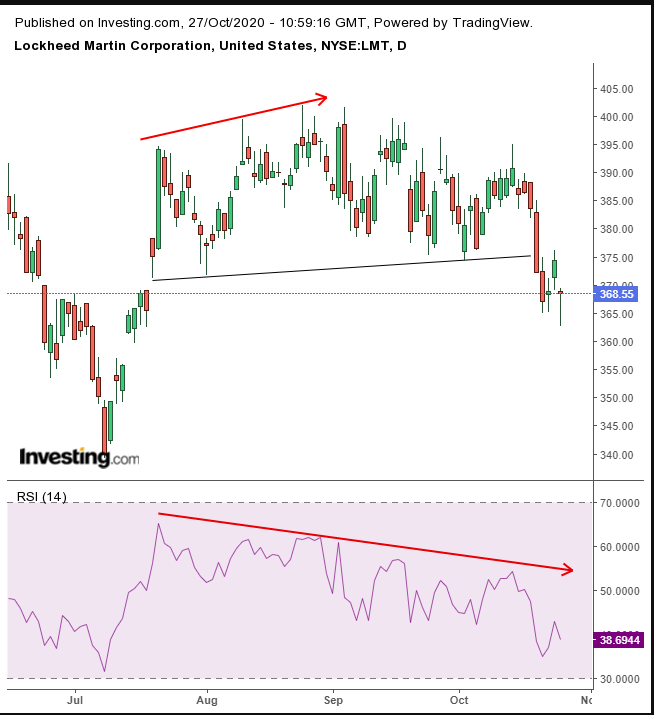Lockheed Martin (NYSE:LMT) ended a two-day rally, falling 1.5% after China said it will impose sanctions on the company and others over arm sales to Taiwan.
However, it’s unclear how much such a move can affect the aerospace and defense company, as 68% of China’s weapons come from Russia, with the remainder spread between France and Ukraine—not from Lockheed Martin.
If anything, Taiwan is the big buyer of Lockheed Martin products, with an over 30-year history as a customer. Moreover, this development is also part of the trade war between the US and China so we can reasonably expect the US to support the company.
So, while we don’t see any cause for a long-term impact on Lockheed Martin, traders may sell it in the short term as a knee-jerk reaction.

The 1.5% selloff yesterday confirmed the integrity of a complex H&S top neckline, demonstrating that the supply-demand flipped.
The RSI gave traders a heads up, having provided a negative divergence to the price, falling while the price was rising.
Trading Strategies
Conservative traders are likely to wait for evidence that bear took over with the price clearing yesterday’s hammer low, on a closing basis, with a filter to avoid a bear trap, of at least 3 days below $362, preferably to include a weekend. Then, they’d wait for a retest that would find resistance, as the final confirmation of a downtrend in the short-term.
Moderate traders would be content with a close below $360 for two days then they too might wait for a return-move for a better entry, if not for additional bearish confirmation.
Aggressive traders may short now, or wait for the possible bounce after yesterday’s hammer, for an entry closer to the pattern’s presumed resistance.
Here’s an example:
Trade Sample
- Entry: $375
- SL: $380
- Risk: $5
- Target: $350
- Reward: $25
- RRR: 1:5
Author's Note: This is a trade sample, which by definition means one approach, but like in anything else, there isn’t only one true way to approach this trade. The above sample is merely to reflect the necessary requirements for a basic, coherent plan. If you don’t have one that you’ll stick to, that reflects your timing, account, and temperament, you’re not trading. You’re gambling. Good trading!
